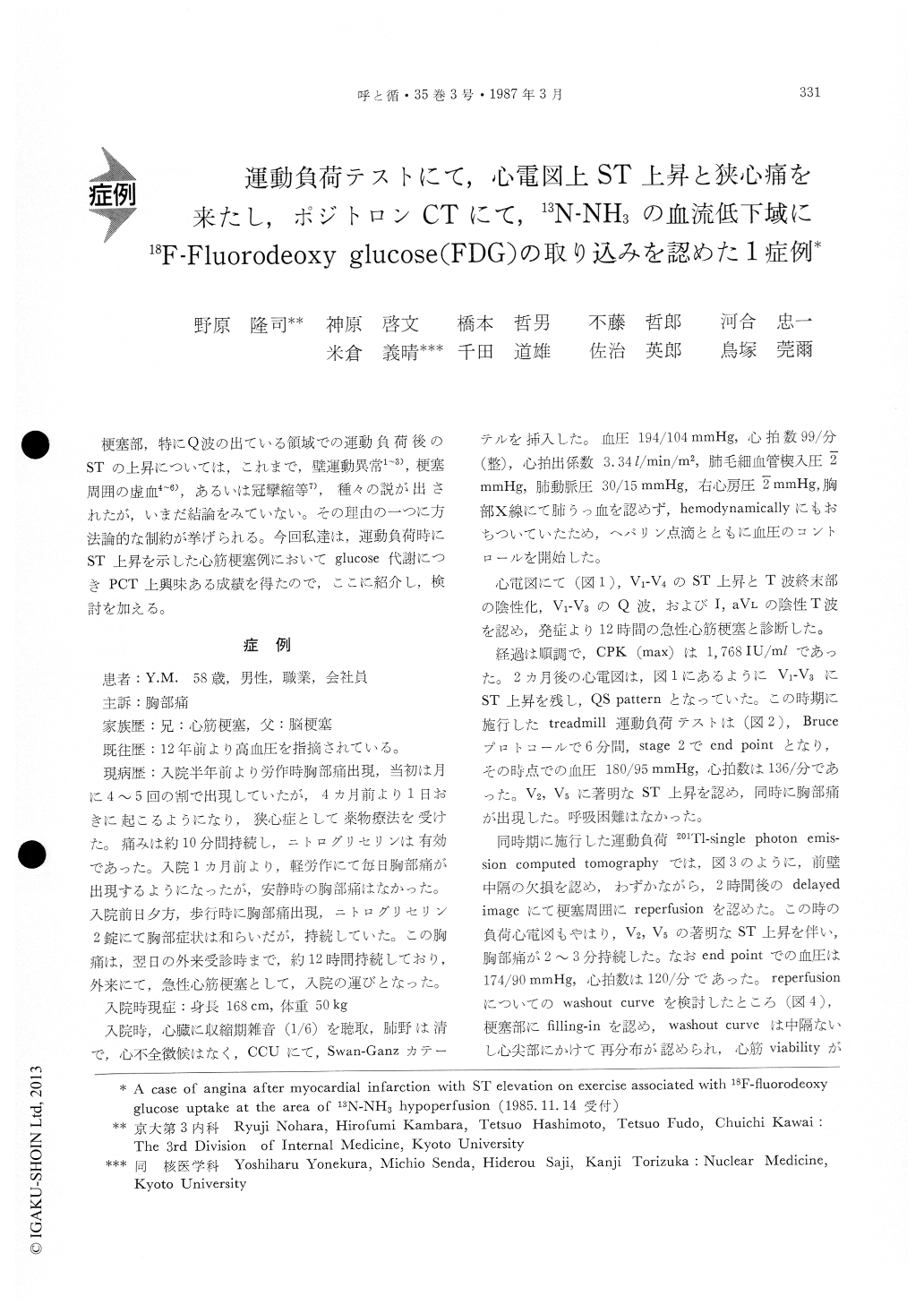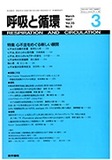Japanese
English
- 有料閲覧
- Abstract 文献概要
- 1ページ目 Look Inside
梗塞部,特にQ波の出ている領域での運動負荷後のSTの上昇については,これまで,壁運動異常1〜3),梗塞周囲の虚血4〜6),あるいは冠攣縮等7),種々の説が出されたが,いまだ結論をみていない。その理由の一つに方法論的な制約が挙げられる。今回私達は,運動負荷時にST上昇を示した心筋梗塞例においてglucose代謝につきPCT上興味ある成績を得たので,ここに紹介し,検討を加える。
A 58-year old male was admitted to Kyoto University Hospital as acute myocardial infarction 12 hours after the onset of chest pain. Anginal pain preceded the attack by 6 months. He had been treated for hypertension for 12 years. The cardiac index was 3.34l/min/m2 and capillary wedge pressure 2 mmHg by Swan-Ganz catheter on admission. Q waves were visible in precordial leads (V1-V4) with T-wave inversion in leads 1 and aV1. Peak CK was 1268IU/ml. 2 months after this attack, the treadmill exercise test was performed, and he complained chest pain with ST elevation in leads V2 and V5 at the 2nd stage of Bruce protocol, which was reproducible. Exercise singlephoton emission computed tomography with Tl-201 revealed an anteroseptal perfusion defect on exercise with partial reperfusion 2 hours after exercise. The washout curve showed filling-in at the infarcted area. 13N-NH3 positron CT (PCT) study showed a middle sized perfusion defect at rest, and F-18 fluorodeoxyglucose (FDG) positron CT revealed a smaller perfusion defect than that of NH3-PCT. The left anterior descending coronary artery was subtotally occluded with intermideate collaterals from the right coronary to the left anterior descending artery. The left ventricurography showed akinesis at anterior wall with worsening of periinfarctional zone on pacing, accompanied by ST-elevation at the anterior wall with chest discomfort.
This case seemed to be a typical case showing periinfarctional ischemia with ST elevation. The ischemia was supported by Tl-201 filling-in and mismatch between NH3 and glucose on PCT, which suggested the existance of viable mass. Thus, PCT is thought to be the best way to demonstrate periinfarctional ischemia.

Copyright © 1987, Igaku-Shoin Ltd. All rights reserved.


